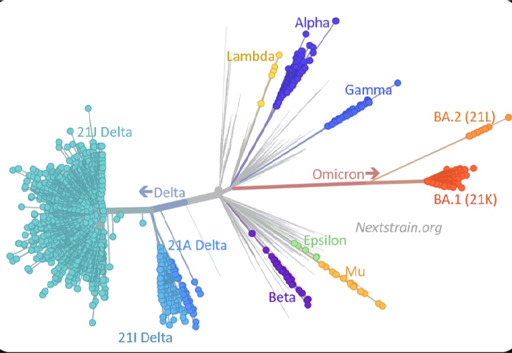2.3 Lineages of SARS-CoV2
Using genomic data, it is possible to reconstruct the lineages for SARS-CoV2, which are analogous to evolutionary family trees (Figure 5). This diagram shows each genome as a single point. The distance of each genome from the origin, reflects the number of mutations that have occurred since the first genome was published. The distance from other points, reflects the genetic distance between them. The lineage was constructed by estimating the fewest number of mutations needed to reach the given genome.

The diagram illustrates some interesting points about the evolution of the virus.
- The progressive accumulation of mutations seen in variants such as Gamma.
- The independent development and great diversity (branching) of the Delta variants.
- The VOCS which spread most rapidly (alpha, delta, omicron) also show the greatest diversity.
- A large number of tracked non-VOC lineages arising from the original Wuhan strain.
It is likely that the virus will continue to evolve and produce new strains over the next few years.
